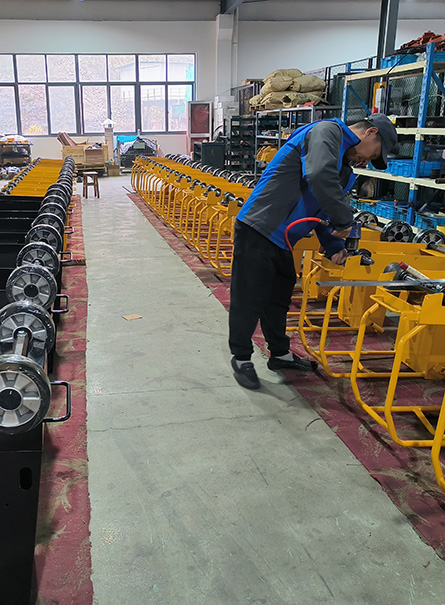Can You Use a Plate Compactor on Dirt?
Yes, a plate compactor can be used on dirt, but it's crucial to assess the type of dirt first, as different soils have varying compaction needs. Granular soils won't compact like cohesive clay soils. The moisture content in the dirt is also important; too little moisture prevents effective compaction, while too much can weaken the ground.
Tip: To check moisture, wet the dirt and grab a handful. If it crumbles, it's too dry; if water can be squeezed out, it's too wet. Ideally, it should hold together well.
Should I Wet Gravel Before Compacting?
Wetting gravel isn’t a necessity for compaction, but a light sprinkle of water can help reduce dust. Ensure you don’t over-wet the area.
How to Use a Plate Compactor on Gravel?
First, evenly spread and level the gravel. A slight dampening can help with dust control. Compact the area in sections for an even result. For specific projects like driveways, preparing the ground by removing the topsoil down to the subsoil layer is essential for stability.
Is a Plate Compactor Necessary for Pavers?
While a plate compactor can help settle pavers at the end of a project, it's not always necessary if proper preparation work has been done. Only use a plate compactor (not a rammer) for this purpose, and be mindful of the compactor's power to avoid damaging the pavers.
Can you use a plate compactor on grass?
Using a plate compactor directly on grass is possible for soil compaction, but caution is advised due to potential harm to the grass's root system. Compacted soil hinders the efficient delivery of water and oxygen to the roots, potentially leading to stunted growth or even the death of the grass. It's crucial to evaluate the necessity of compacting over grass instead of removing it.
If you choose to proceed with a plate compactor on grass, remember it's different from using a water-filled roller, which is intended for gentle pressure application on newly laid grass without harming the roots. In contrast, a plate compactor exerts significantly more pressure and vibration, posing a risk to the grass roots and overall health.
TWO COMMON MISTAKES
Over Compaction:
Contrary to common belief, over compacting soil can be detrimental. Excessive compaction can cause the soil structure to break down, leading to a reduction in its support capabilities. Imagine a pile of small rocks; with the right amount of force, they can be flattened, but overdoing it turns them into sand, altering their original form. Similarly, over compaction changes the soil composition, reducing its strength.
You might notice over compaction through the machine's response - abnormal hitting can be a sign. To avoid it, use the industry trick: divide the machine's maximum compaction depth rating by three. If this number is larger than your soil layer's thickness, there's a risk of over compacting. For base materials, a guideline is the 1” rule: your machine can compact 1” of lift for every thousand pounds of compaction force.
Under Compaction:
Under compaction usually occurs due to inadequate equipment size or insufficient compactor passes. It also happens if the lift or depth of soil is incorrect, as compacted surface soil lessens the equipment's impact, causing the compaction energy to bounce back.
Under compaction results in uneven settlement, leading to structural issues since the soil can't bear the intended weight. While large projects often have engineers to handle soil and compaction specifics, for smaller or DIY projects, understanding your equipment and soil type is crucial to avoid under compaction.
Always ask questions if unsure, and seek proper training, especially if you're new to using compaction equipment. Many manufacturers or dealers offer training sessions, so utilize these resources to avoid future problems.


